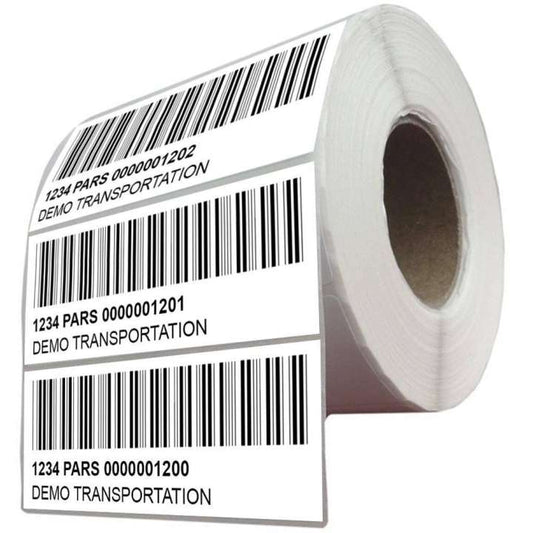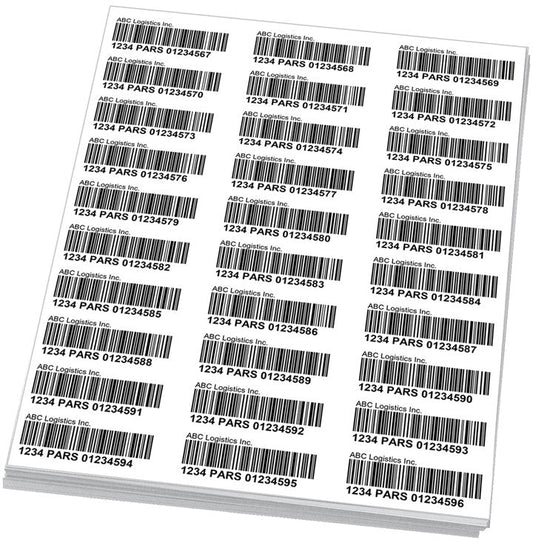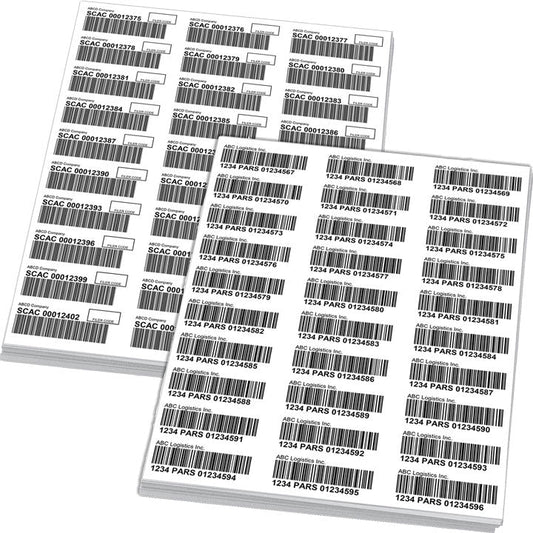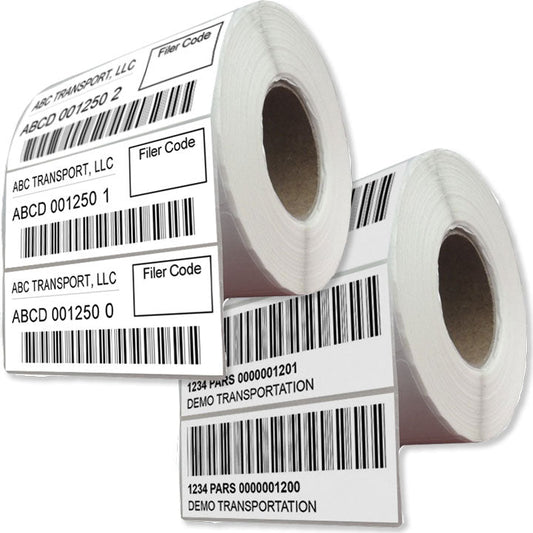
Canada CBSA Cross-Border Requirements
Our Canada CBSA Cross-Border Requirements page equips you with essential knowledge and practical tips, ensuring a smooth passage through customs and immigration, so you can focus on creating unforgettable memories in the Great White North.

In order to cross commercially into the Canada, the carrier will need to register with the specific provincial transportation authority as a commercial carrier. In Ontario this is done through the Ministry of Transportation with a CVOR or (Commercial Vehicle Operators Registration). Once a carrier and driver is registered with a CVOR, the company will then apply for a Bonded or Non-Bonded Carrier Code with Canada Border Services Agency. This Carrier Code is a 4-character unique company identifier for use with cross-border shipments. Once the carrier code is valid, the carrier can then create barcode labels and register to process ACI eManifests.
Cross-Border and Trusted Trader Information
-
Below are helpful articles that cover the process of crossing commercially into Canada:
-
Free and Secure Trade (FAST)
is a joint initiative between CBP and CBSA designed to enhance border security while speeding up the processing of low risk shipments. Carriers that are FAST approved for the U.S. are able to transport FAST shipments, and are afforded special processing at the border including dedicated lanes and front of line line processing in the case of inspections.
-
Customs Self Assessment (CSA)
allows for the clearance of goods imported by a CSA Approved importer and transported by a CSA Approved carrier. For a shipment to clear under CSA both the importer and carrier must be CSA Approved, and the driver must be registered with either the Commercial Driver Registration Program (CDRP) or the Free And Secure Trade (FAST) driver registration program.
-
Partners in Protection (PIP)
is a cooperative program between private industry and the CBSA aimed at enhancing border and trade chain security. This voluntary program has no membership fee. It is designed to streamline and make border processes more efficient for low-risk, pre-approved businesses recognized as trusted traders.
-
Customs-Trade Partnership Against Terrorism (C-TPAT)
is a voluntary public-private sector supply chain security program led by U.S. Customs and Border Protection (CBP). Through this program, CBP works with the trade community to strengthen international supply chains and improve United States border security.
ACI eManifest Requirements
-
ACI eManifest Requirements
The Advance Commercial Information (ACI) program introduces more effective risk management processes and tools to identify threats to our health, safety, and security prior to the arrival of cargo and conveyances in Canada. The purpose of this page is to provide general information on the ACI program. For complete ACI guidelines please refer to the following Customs Departmental Memorandums from Canada Border Services Agency.
ACI Program Overview
The ACI program is about providing CBSA officers with electronic pre-arrival information so that they are equipped with the right information at the right time to identify health, safety and security threats related to commercial goods before the goods arrive in Canada.
ACI Requirements for Highway Carriers
Under ACI eManifest regulations highway carriers must ensure that BOTH the ACI eManifest and the entry by the customs broker (for PARS shipments) are on file with CBSA for at least one hour prior to the driver's arrival at the border. Failure to do so could result in refused entry into Canada and/or an AMPS penalty.
Any changes or updates to the manifest will start the one hour clock again.
-
Administrative Monetary Penalty System (AMPS)
The Canada Border Services Agency (CBSA) uses the Administrative Monetary Penalty System (AMPS) to issue monetary penalties to commercial clients for violating CBSA's trade and border legislation. The purpose of AMPS is to provide the Agency with a means to deter non-compliance by its clients and create a level playing field for all Canadian businesses.
The Master Penalty Document contains all AMPS contraventions that may be applied to commercial clients including importers, exporters, brokers, warehouse and duty free shop operators, carriers, freight forwarders or their representatives.
ACI Lead Sheet Arrival Requirements
When arriving at the border in Canada, the driver must present an ACI lead sheet to the customs officer. The lead sheet allows the officer to bring up the ACI eManifest in their system.
The lead sheet must have either:
A barcoded Conveyance Reference Number (aka Trip Number), or
A barcoded Cargo Control Number and a handwritten Conveyance Reference Number, or
A handwritten Conveyance Reference Number on the lead sheet presented with a separate page with a barcoded Cargo Control Number (e.g. invoice with a PARS sticker).
The officer will stamp the lead sheet only as proof of report, they will no longer stamp individual shipments. The carrier has a responsibility to keep the stamped lead sheet as proof of report.
ACI lead sheets can be generated from within BorderConnect, either from the manifest or as a set ahead of time. The carrier can also design and produce their own lead sheets, provided that they meet the barcode requirements listed above.
Shipment Release Types Required for ACI eManifests
The following shipment types are used for goods entering Canada via highway carrier:
PARS - default shipment type for commercial goods entering Canada, allows pre-clearance of goods.
In-Bond - allows for inland movement of goods that are not considered 'released'' by CBSA.
CSA - special shipment type for parties enrolled in the CSA trusted trader program when all required conditions are met.
A49 Automotive Release - special shipment type used for shipping production automotive parts to Chrysler, Ford and GM.
ATA Carnet - type of temporary import.
E29B - type of temporary import.
Personal Goods - used when non-commercial goods are transported by highway carriers.
Orders In Council - used when goods are covered under an Order in Council granting exemption from normal release methods.
Cargo Exemptions Required for ACI eManifest
The following cargo exemptions are required to be declared for goods entering Canada via highway carrier:
IIT - used for empty racks and containers that cross the border in international transportation.
Flying Truck - used when freight that was originally supposed to arrive in Canada by air instead arrives by truck.
Courier LVS - special shipment type only available to couriers transporting low-value shipments.
Postal Shipment - used to report shipments of mail moving from a foreign postal service to Canada Post.
In-Transit - used when goods are moving from point-to-point traveling through the United States.
Emergency Repairs - used by Canadian carriers to report emergency repairs to commercial vehicles that occur outside Canada.
The information contained on this page was generated from the BorderConnect Support Wiki.
Order PARS Barcode Labels
-
PARS Barcode Labels (Rolls)
Regular price From $30.00 CADRegular priceUnit price / per$42.50 CADSale price From $30.00 CADSale -
PARS Barcode Labels (Sheets)
Regular price From $36.00 CADRegular priceUnit price / per -
PARS & PAPS Barcode Labels (Sheets)
Regular price From $69.00 CADRegular priceUnit price / per -
PARS & PAPS Barcode Labels (Rolls)
Regular price From $60.00 CADRegular priceUnit price / per$82.50 CADSale price From $60.00 CADSale




